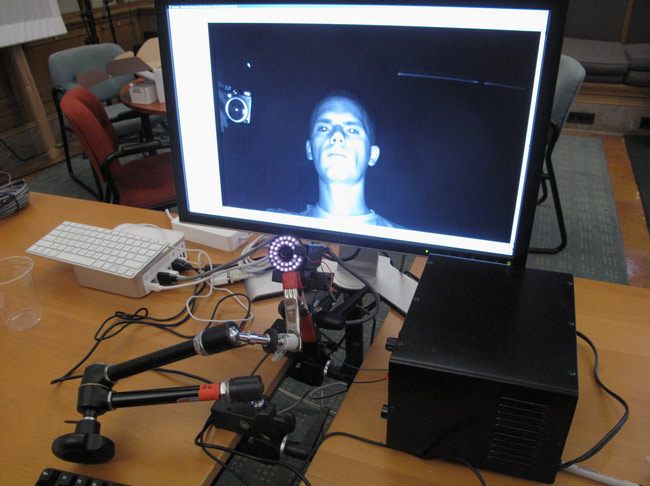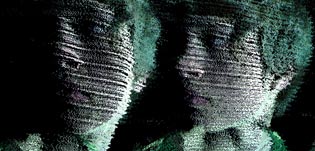Cheap 3D Scanning and the EyeWriter project
Kyle McDonald (2010)
In 2010 as one of our summer fellows Kyle McDonald worked on two projects, his own DIY 3D Scanning device and the EyeWriter project developed by Free Art and Technology (FAT), OpenFrameworks and the Graffiti Resarch Lab.
Below is Kyle’s description of his fellowship at the STUDIO:
“While working at the STUDIO, I initially focused on pushing my open source 3d scanning software to its limits. Previous scans had an unfortunate, regular glitch that caused waviness or ripples in the surface. This was a by product of having a projector and camera that are not gamma calibrated. This means that when the projector projects 50% gray, it’s not exactly half way between black and white (it’s generally a bit brighter). And when the camera sees 50% gray, it’s usually seeing something that’s actually a bit darker. With higher quality cameras and projectors this isn’t an issue, but I wanted my software to be available for people with all kinds of hardware. So I developed some new software that helps calibrate cameras and projectors regardless of their quality. It worked, and these new developments were used in the interactive piece “The Janus Machine” as well as the music video for “Gold” by Darkstar.”
3D Capture at 60fps from Kyle McDonald on Vimeo.
Kyle continues:
“I spent the second half of my residency focused on the EyeWriter project. I worked heavily with Takayuki Ito, an incredible technician from YCAM, to develop a new version of the EyeWriter: version 2.0. We worked on the electronics, minimized the circuitry required, and rewrote the tracking code to be more accurate and simpler. We also preemptively addressed a potential issue for the future of the EyeWriter project. EyeWriter is heavily reliant on the availability of the PS3Eye camera, a cheap video game peripheral that happens to have excellent optics and electronics for its price. We created an alternative solution that uses a higher end, but still affordable, camera that is more likely to be supported — even as videogame consoles come and go. The developments from this research were posted in the EyeWriter 2.0 Instructable, as well is the ongoing project ofxLibdc which helps capture data from the new camera. The research into retroreflection was also used in a collaboration with Golan Levin called “Eyeshine”, still in development.”

People


